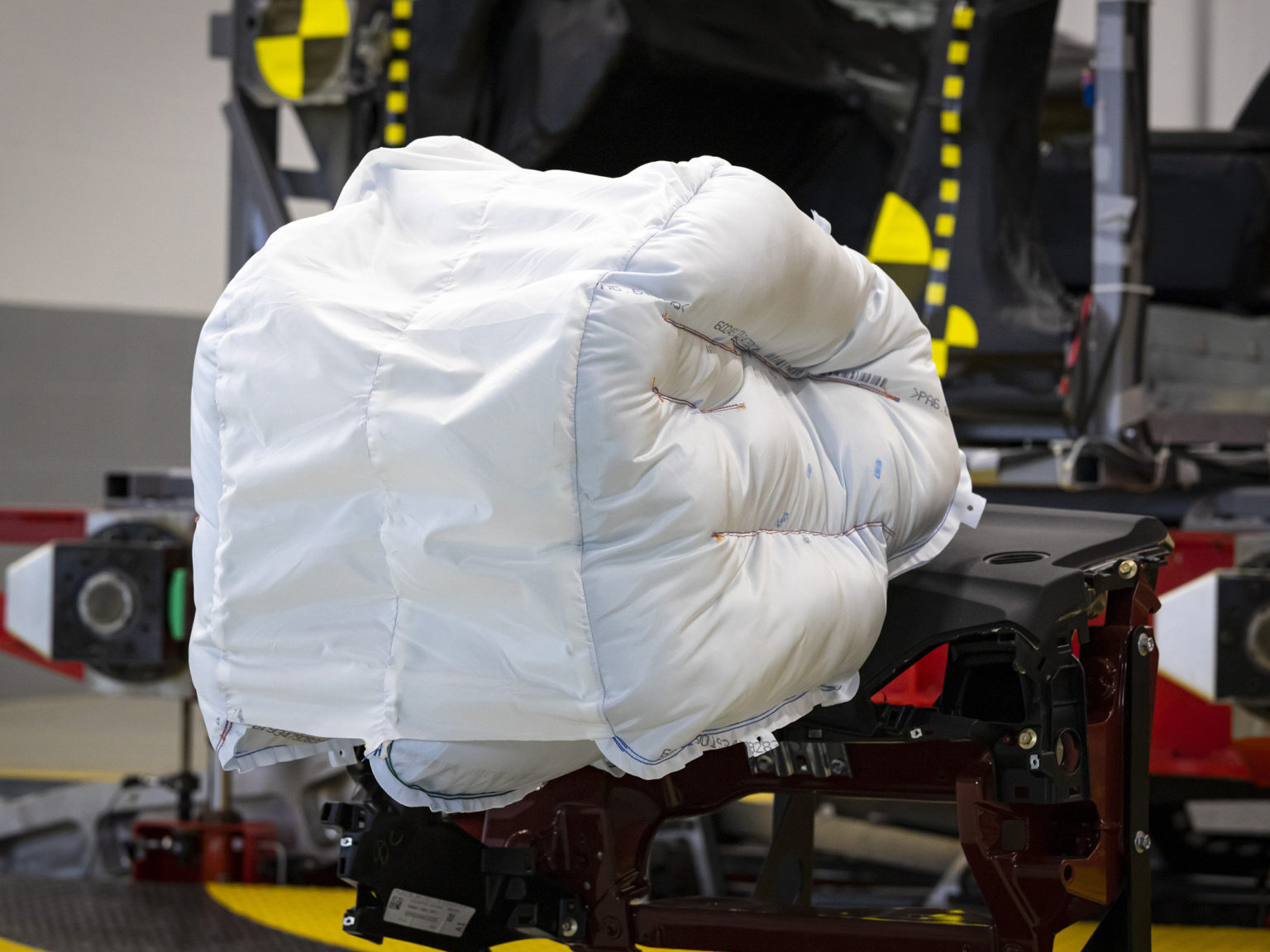“Safety for Everyone” the banners read inside Honda’s R&D facility in Marysville, Ohio. Whether they’re evolving hood creases to absorb impacts different or designing a stronger chassis, safety is in focus for design and engineering teams responsible for innovating Honda and Acura products. It was at this facility last August that Honda revealed its newest safety innovation to the press for the first time – a baseball mitt-like airbag.
Honda has been one of the companies hardest hit by the Takara airbag recall. The nearly decade-long saga is finally in its last chapter and, to close it out, the automaker is taking the bull by the horns developing their own airbag from initial concept to production.
Crash testing is vital but the time it takes to reset between tests is cumbersome so companies are relying more and more on computer simulations.Photo courtesy of American Honda Motor Co., Inc.
Honda Research & Development Americas is the largest facility of its kind outside of Japan. It is 1.6 million square feet of workspace for over 1,600 employees. It’s a place that doesn’t just innovate the minutiae. They’ve been designing vehicles from the ground up since starting work on the 1991 Honda Accord Wagon. That work continues through the Honda Passport and forthcoming redesigned Acura MDX.
The 2001 Honda Civic Coupe was designed there and become one of the first two vehicles to earn a five-star Euro NCAP rating in front and side crash testing.
At the facility, the company’s efforts aren’t just with passive safety systems. Honda is on the path to zero injuries as a result of a collision.
Walking into the large cubicle-riddled workspace where product designers and engineers sit within the facility, it’s clear to see that the human factor plays a role. Memory books are filled in photos and letters from crash victims who have had their lives saved because of innovation, reminding workers that their jobs are helping people the world over.
Brian Bautsch, manager of automotive crash safety at Honda R&D Americas, holds one of the company’s scrapbooks that is full of letters from grateful customers.Photo courtesy of American Honda Motor Co., Inc.
Honda has the ability to crash test cars on-site, however the process is expensive and there is a long wait time between sled tests. The process is also not environmentally friendly.
Instead of continually running crash tests for every possible design tweak, the company is able to digitally simulate crashes using computers. This allows engineers to have the ability to strip back layers of design and isolate parts of the vehicle to see how speed, impact, direction, and condition all are effected during a crash.
The company does approximately 30,000 simulations during a vehicle’s development. That has created 220 TB of storage data. How much is that? Take the amount of data that is in every book ever published and multiply it by four.
This has changed the product development cycle from design, then simulation then mule crash testing then mass production to design then simulation then mass production.
Before Honda crash tests using their sled, they’re able to simulate the same test thousands of times using computers.Photo courtesy of American Honda Motor Co., Inc.
That’s not to say that Honda isn’t crash testing vehicles. The company has a fleet of 48 full-scale crash test dummies that are sized for children and adults with different models representing the typical adult female and male forms.
Different types of dummies and different generations of those test subjects are used depending on what the team is trying to find out. One even has a water bladder to replicate the density of a human for vehicle-to-pedestrian testing.
Safety technicians and engineers measure the responses of the dummies during a variety of scenarios in four ways: head drop, neck pendulum, torso impact, and knee impact.
It isn’t just the traditional features of the vehicle that have to be taken into account. The impact of an airbag deployment during a collision can injure as well as prevent more serious injuries. It’s all about the way the bag deploys and contacts the passenger. It’s a split-second interaction that humans generally do not have time to properly situate themselves for.
Honda’s test dummy fleet features models in a variety of shapes and sizes.Photo courtesy of American Honda Motor Co., Inc.
That’s where Honda’s new airbag style comes in. It’s easiest to think of as a pillow with sides and a minimalistic center section – a catcher’s mitt-like style that wraps around the sides of the head of the passenger disallowing neck twisting or pendulum motion.
In testing shown during a demonstration in August, just after a testing sled was crashed, the airbag deployed, wrapping around the test dummy from about the shoulders up for a split second- just long enough to minimize the effect of injuries like whiplash and prevent debris from the injury from making contact with the face. The dummy’s body’s reaction was far less severe than when an airbag as traditionally thought of deploys as the result of a collision.
This new airbag is the first real innovation in airbag technology in over a decade. Holding true to their motto that safety is for everyone, Honda is making the airbag technology available by partnering with automotive safety supplier Autoliv and not holding exclusivity over the product.
2021 TLX Advances Acura’s Commitment to Safety Performance
www.youtube.com
The new airbag will makes its debut inside the 2021 Acura TLX. It’s reasonable to assume that the forthcoming next-gen Acura MDX will have the same technology.









